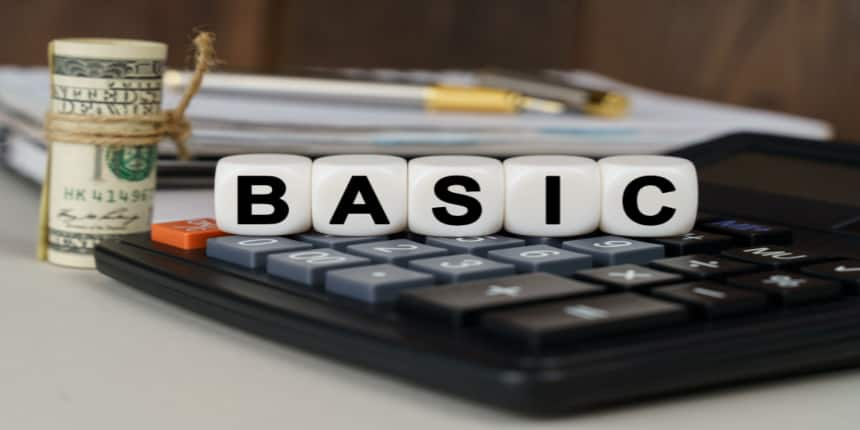BSR Full Form
What is the full form of BSR?
BSR stands for Basic Statistical Return. The Basic Statistical Return Code (BSR Code) is a seven-digit code that the Reserve Bank of India issues to all banks in the country that are officially registered. The Reserve Bank of India, commonly known as RBI, is India’s central bank and regulatory body for the banking system. This BSR code is unique to every branch of all registered banks. It is primarily used by customers of a bank during the process of filing Tax Deduction at Source (TDS) and Tax Collected at Source (TCS) returns. Read on to learn more about BSR codes and why they are important in the banking ecosystem.
- What is the full form of BSR?
- 1. Where are BSR codes used?
- 2. Benefits of using BSR codes
- 3. Classification of BSR codes
- 4. Difference between IFSC code and BSR code

1. Where are BSR codes used?
Every branch of India’s registered banks has a unique BSR code. This code is mainly used by customers of the bank BSR when they have to file Tax Deduction at Source (TDS) and Tax Collected at Source (TCS) returns in the income tax filing process.
Using this code specifically for TDS and TCS filing helps the banks keep a complete record of every online transaction made by their customers towards tax payments. The banks then make records available to the Income-Tax Department of India. This helps to prevent taxation fraud.
The following documents have the BSR Code in them:
Tax Deduction at Source (TDS) certificates
Challan Identification Number (CIN). This number is unique for every challan that is generated.
In Online Tax Accounting System (OLTAS) challans and in deduction details.
2. Benefits of using BSR codes
BSR codes provide several significant benefits. These are as follows:
Taxation
The BSR Code helps the Tax Department immensely in getting accurate information about the taxes that are paid through banks.It enables them to keep track of tax payment transactions via challan details uploaded to the OLTAS (Online Tax Accounting System).
Benefits to Senior Citizens in getting pensions quickly
BSR Codes make the process of receiving pensions very simple for senior citizens who were previously employed by the Government of India. To take advantage of the benefits of receiving pensions quickly and without any glitches, senior citizens have to inform their bank branch and submit their bank account number and the BSR Code.
International Taxation
International taxation standards and regulations require a bank’s BSR Code, through which tax remittances are made. This helps authorities track international tax payments made by an Indian residential citizen to a foreign country. If an individual makes the remittance through a foreign bank that is located in this country, the BSR code is mandatory.
3. Classification of BSR codes
The Basic Statistical Return Code is classified into seven categories based on the structure of the statistical reporting system. This ensures a regular and standardized flow of information.
BSR1 | Half-yearly Return on Advances from all branches on the last Friday of June and December. There are two parts BSR- Part I for accounts with limits of more than Rs. 10,000 BSR -Part II for accounts with limits equal to or less than Rs.10,000 |
BSR2 | Half-yearly Return Deposits from all branches on the last Friday of June and December. |
BSR3 | Monthly Return Advances from bank head offices on the last Friday of each month against the Security of Selected Sensitive Commodities |
BSR4 | Return on Ownership of Bank Deposits every two years from all branches on the last Friday of March. |
BSR5 | Annual Return on Bank Investments from bank head offices on the last day of March. |
BSR6 | Survey on Debits to Deposits Accounts from April to March of the year every five years. |
BSR7 | Quarterly survey on Aggregate Deposits and Gross Bank Credit by head offices of banks as of last Friday of June, September, and December, and as on March 31. |
4. Difference between IFSC code and BSR code
Just like banks have IFSC Codes unique to each branch, they also have unique BSR Codes. Both of these codes help in the identification of the bank and the branch. However, there are several differences between the two.
IFSC stands for “Indian Financial System Code.” In India, bank account transfers of money are done using the IFSC code. The IFSC code is also used by the Reserve Bank of India (RBI) for electronic funds transfers between banks since it enables them to confirm the transfer of resources. BSR Code stands for Basic Statistical Return Code and is used by the RBI to seamlessly track tax-filing transactions done through banks. The IFSC code is an 11-digit alpha-numeric code, while the BSR code is a 7-digit number.
Frequently Asked Questions (FAQs)
The first 3 digits of the BSR Code denote the bank, and the next 4 digits represent the bank branch.
CIN stands for Challan Identification Number and is a 20-digit unique identification number mentioned on any taxpayer’s counterfoil. The 7-digit BSR code is integrated into the CIN number, along with the 8-digit date of deposit and the 5-digit challan number.
The first 7 digits of a challan’s CIN are the BSR Code.
The first 3 digits of the BSR code represent the bank. For the State Bank of India, it is 001.
Yes, the BSR of a bank is mandatory when filling out TCS and TDS returns during tax filing.